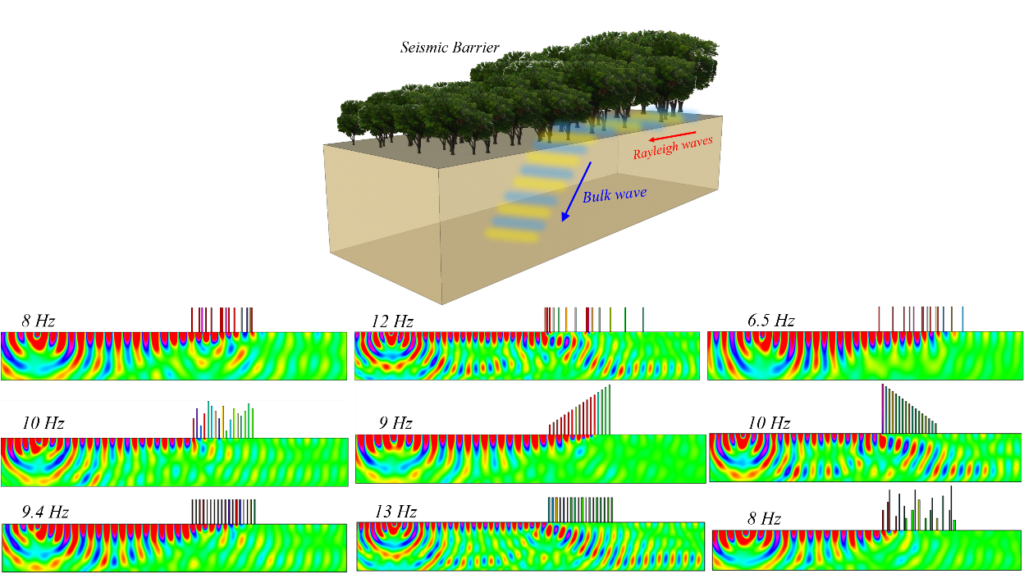Presentation Title: Natural Seismic Metamaterials: The Effectiveness of Forest Trees in Catering Rayleigh Wave by Presence of Extremely Wide Bandgaps
Prof. Dr. C.W. Lim presented this talk in the webinar on Materials Science, Engineering and Technology organized by Vebleo
Author: C.W. Lim and Muhammad
Affiliation: Department of Architecture and Civil Engineering, City University of Hong Kong, Kowloon Tong, Kowloon, Hong Kong SAR, P.R. China
Biography
Currently a fellow of ASME, ASCE, EMI and HKIE, Ir Prof. Dr. C.W. Lim received BEng from University of Technology of Malaysia, MEng and PhD from National University of Singapore and Nanyang Technological University, respectively.
Prior to joining City University of Hong Kong, Prof. Dr. C.W. Lim was a post-doctoral research fellow at The University of Queensland and The University of Hong Kong. Prof. Dr. C.W. Lim has expertise in theory of plates and shells, dynamics of smart piezoelectric structures, nonlinear dynamics, nanomechanics, symplectic elasticity and metamaterials.
Prof. Dr. C.W. Lim is one of the editors for JoMMS, Assoc Editor for JVET, IJBC, JTS, subject editor for AMM, and on the editorial board of some top-ranked international journals.
Prof. Dr. C.W. Lim has published one very well-selling title in Engineering Mechanics entitled “Symplectic Elasticity”, co-authored with W.A. Yao and W.X. Zhong, as recorded in April 2010 by the publisher, World Scientific. He has published more than 310 international journal papers, accumulated more than 10,000 citations and has a Google Scholar H-index 54.
One of his papers that generalizes two separate models, the nonlocal elasticity and strain gradients, to a generalized nonlocal strain gradient theory has been cited more than 600 times since it was first published in JMPS in 2015. It is also a highly cited paper in the journal. Another paper was granted the IJSS 2004-2008 most cited article award.
Prof. Dr. C.W. Lim was also awarded Top Referees in 2009, Proc. A, The Royal Society. Professor Lim is a registered professional engineer in HK. He holds one registered finite element software and three patents. Recently Professor Lim was awarded the prestigious 2020 JN Reddy Medal1 as a recognition “for significant and original contributions to vibration of plates and shells, smart piezoelectric structures, nanomechanics, and symplectic elasticity”.
Abstract
The recent surge in the number of studies on seismic metamaterials is testimony to the fact that the concept of phononic crystals and acoustic metamaterials is no longer limited to basic theories and dynamic characteristics. Apart from the other enormous findings including negative stiffness, negative mass density and negative refraction properties, auxetic metamaterials that govern negative Poisson ratio, nonreciprocal wave phenomena, kirigami effects etc. also find potential applications in geophysics and earthquake engineering.
Except man-made synthetic resonators/metastructures, recently forest trees at geophysical scale are reported as naturally available seismic metamaterials with capability to mitigate ground born ambient vibrations and incoming seismic waves at subwavelength frequency region.
The present study focuses on forest trees arrangement types and the effects of soil properties on interaction with incoming Rayleigh wave and wave attenuation phenomena. We found that when the surface ground motion caused by incoming Rayleigh wave couples with longitudinal resonant modes of the forest trees will generate low frequency Rayleigh wave bandgaps.
Technically, such coupling results into phase in incoming Rayleigh wave upon interaction with resonant trees compared to the incident signals. The cluster of forest trees further fosters wave hybridization/local resonance phenomena for a wide range of frequency that induces bandgaps. Inside the bandgap frequency range, there exists no surface wave mode solution hence the surface Rayleigh wave cannot propagate.
Thus, the Rayleigh wave either gets trapped into the forest trees and/or the modes being converted into harmless bulk longitudinal and shear waves that propagate deep into the ground. These governing classical and inverse wedge mechanisms solely depend upon the forest trees arrangement types, geometric parameters and ground/soil conditions. We have also reported a parametric study for a wide range of wave velocity propagating into the ground and their effects on bandgaps.
A denser and stiffer ground shifts the bandgap to a higher frequency region. Likewise, for a softer soil medium, the bandgap is at the lower frequency range. We have also considered the effect of graded and random forest trees arrangements on bandgaps. The study shows that the generation of bandgap is independent of arrangement types due to locally resonant nature of the bandgaps.
However, the random arrangement yields wider bandgaps compare to the periodic counterparts. This is due to the random distribution of geometric parameters. This case is closer to the real ground conditions.
We will further conduct an in-depth investigation to study the effect of saturated/unsaturated soil conditions, the presence of ground water table, soil plasticity, liquefaction and other related soil properties on wave hybridization and wave mode conversion phenomena in the future.
We will also validate the results by experiment via a scale model in the laboratory and subsequently on forestry area in mainland China.
Our study is expected to motivate the government and local/international organization/communities for natural forestation to cater for climate change, other disasters such as floods and landslide, but also to mitigate seismic hazards.
Graphical Abstract

This talk was delivered in the webinar organized by Vebleo